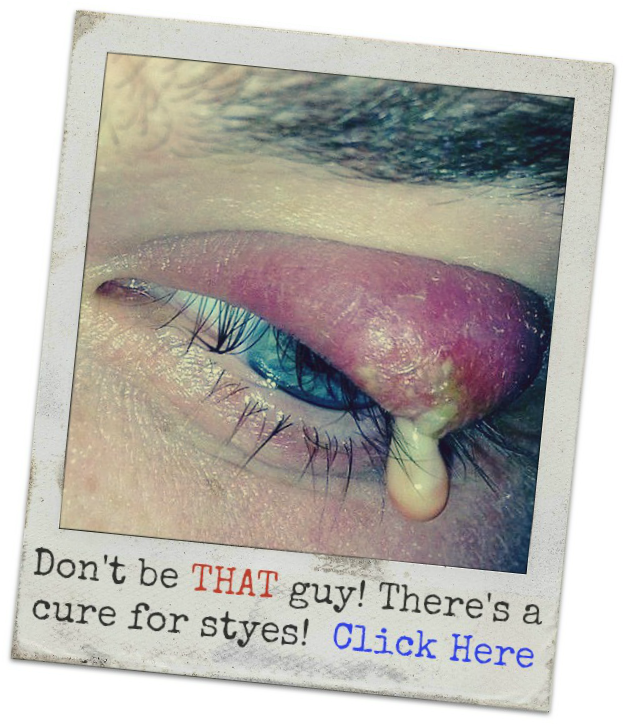CAN YOUR DIET CAUSE RECURRING EYE STYES?
It’s said that every person will develop at least one eye stye during the course of their lifetime. But when a person suffers from recurring styes, whether repeatedly or periodically, it could be a sign of underlying disease, such as blepharitis or meibomian gland dysfunction (MGD)—which is a condition where the oil secreting glands either produce to little oil, or secret poor quality oil.
The question often comes up, ‘can your diet be causing recurring styes,’ or ‘can a special course of food cure meibomian gland dysfunction (MGD)?’.
Just to be clear, there are two types of styes; internal stye and external stye. An external stye is an inflamed swelling that forms on the edge of the eyelash margin. It appears on the outside of the eyelid and resembles a pimple or whitehead. Whereas internal stye is an acute purulent infection of the meibomian glands. Internal styes form deep in the eyelid and often occur again and again.
People who suffer from recurring styes, as a result of blepharitis or MGD, develop internal styes. And it’s often said that dietary supplementation of omega-3 or foods rich in omega-3 fatty acids may alleviate blepharitis and the resulting MGD symptoms, and subsequently, eliminate the likelihood of developing recurring or multiple styes as many blepharitis/MGD sufferers do.
Blepharitis or meibomian gland dysfunction is inflammation of the eyelid or eyelid glands. And studies show that omega-3 FAs are beneficial in reducing chronic inflammatory disease. In fact, populations who have a high dietary intake of long-chain omega-3 polyunsaturated fatty acids from seafood, coming from salmon, bluefin tuna, had a low incidence of chronic inflammatory disease.
In the study, patients who consumed 1.2 g daily dose of omega-3 fatty acid consisting of docosahexaenoic acid 480 mg and eicosapentaenoic acid 720. The study suggest that omega-3 fatty acid supplementation helps in the treatment of meibomian gland dysfunction, but does not provide immediate relief or a cure.
References
Macsai, Marian S. "The Role of Omega-3 Dietary Supplementation in Blepharitis and Meibomian Gland Dysfunction (An AOS Thesis)." Transactions of the American Ophthalmological Society. The American Ophthalmological Society, Dec. 2008. Web. 10 Oct. 2016. <https://www.ncbi.nlm.nih.gov/pmc/articles/PMC2646454/>.
The question often comes up, ‘can your diet be causing recurring styes,’ or ‘can a special course of food cure meibomian gland dysfunction (MGD)?’.
Just to be clear, there are two types of styes; internal stye and external stye. An external stye is an inflamed swelling that forms on the edge of the eyelash margin. It appears on the outside of the eyelid and resembles a pimple or whitehead. Whereas internal stye is an acute purulent infection of the meibomian glands. Internal styes form deep in the eyelid and often occur again and again.
People who suffer from recurring styes, as a result of blepharitis or MGD, develop internal styes. And it’s often said that dietary supplementation of omega-3 or foods rich in omega-3 fatty acids may alleviate blepharitis and the resulting MGD symptoms, and subsequently, eliminate the likelihood of developing recurring or multiple styes as many blepharitis/MGD sufferers do.
Blepharitis or meibomian gland dysfunction is inflammation of the eyelid or eyelid glands. And studies show that omega-3 FAs are beneficial in reducing chronic inflammatory disease. In fact, populations who have a high dietary intake of long-chain omega-3 polyunsaturated fatty acids from seafood, coming from salmon, bluefin tuna, had a low incidence of chronic inflammatory disease.
In the study, patients who consumed 1.2 g daily dose of omega-3 fatty acid consisting of docosahexaenoic acid 480 mg and eicosapentaenoic acid 720. The study suggest that omega-3 fatty acid supplementation helps in the treatment of meibomian gland dysfunction, but does not provide immediate relief or a cure.
References
Macsai, Marian S. "The Role of Omega-3 Dietary Supplementation in Blepharitis and Meibomian Gland Dysfunction (An AOS Thesis)." Transactions of the American Ophthalmological Society. The American Ophthalmological Society, Dec. 2008. Web. 10 Oct. 2016. <https://www.ncbi.nlm.nih.gov/pmc/articles/PMC2646454/>.

